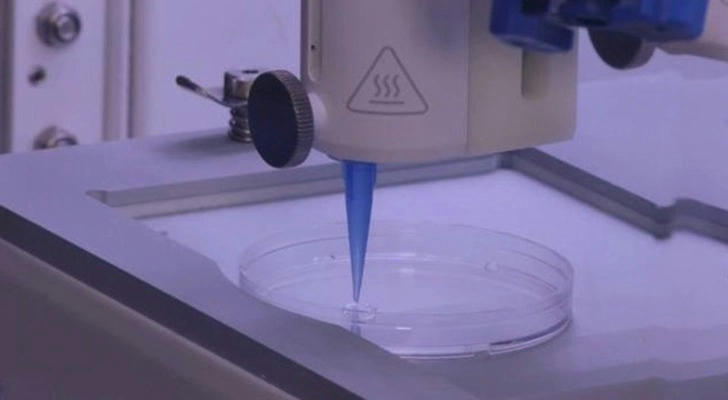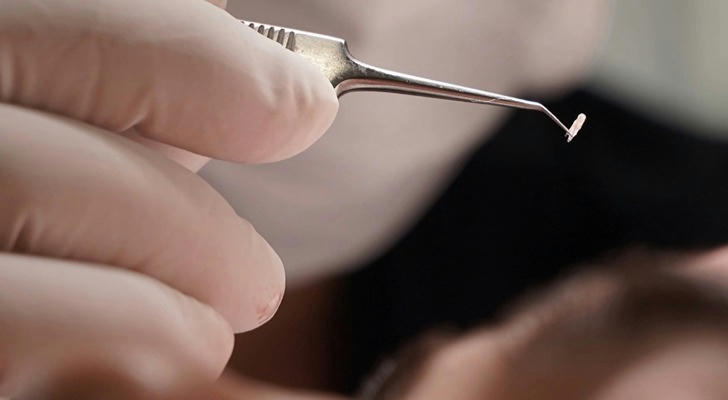Artificial Hair Follicles: The Future of Hair Transplants
Hair loss is a common issue that affects millions of people worldwide. It can be caused by various factors, including genetics, hormonal changes, stress, and certain medical conditions. For many people, hair is closely tied to their sense of identity and self-esteem. When hair starts to fall out, it can lead to feelings of embarrassment, anxiety, and even depression.

To solve this, hair transplantation was developed. Before this, people could only use temporary solutions such as wigs or hairpieces. These options often resulted in problems such as falling off, looking unnatural, and causing discomfort. With hair transplantation, people can now enjoy a permanent solution that looks natural and blends seamlessly with their existing hair, helping them feel more confident about their appearance.
And the development of artificial hair follicles is taking things to a new level...
What are artificial hair follicles?
Artificial hair follicles are innovative creations made from advanced materials like collagen. Using technologies such as 3D printing, they can be precisely transplanted into the scalp. They are designed to replicate natural hair follicles and promote hair growth.

Artificial hair follicles vs. traditional hair transplantation
Artificial hair follicles offer several advantages over traditional hair transplantation methods, making them an appealing option for many people experiencing hair loss.
1. Instant effect
One of the biggest benefits is that artificial hair follicles can provide immediate results. While traditional hair transplants require time for the transplanted hair to grow, artificial follicles can create the appearance of fuller hair right away. This is particularly helpful for those who want a quick fix.
2. No donor hair required
Another advantage is that artificial hair follicles don’t require donor hair. This is a significant benefit for individuals with limited hair to transplant, as they can still achieve a fuller look without needing to rely on their own hair.

3. Less traumatic
In addition, the process of implanting artificial hair follicles is usually less invasive than traditional methods, with a shorter recovery time and less discomfort, which means that patients can return to normal activities faster.
Let's take a look at John's experience after he had a traditional hair transplant last week:
"To be honest, the whole process was really painful. During the operation, they had to peel off a large piece of scalp from the back of my head. The tearing feeling made me uncomfortable for several days. My scalp was swollen and painful, and I had to take leave to rest at home."
The implantation of artificial hair follicles usually does not require cutting and suturing of the scalp, which will greatly reduce the pain during and after the operation.
Artificial hair follicles still face challenges
However, artificial hair follicles are not perfect and they still have limitations.The following are some disadvantages of artificial hair follicles.
1. Short life and high maintenance cost
One of the main challenges facing artificial hair follicles is their limited lifespan. Unlike natural hair follicles, artificial hair follicles do not have the ability to grow. Artificial hair follicles are made of various synthetic materials. These materials may break down over time or lose their functionality. As a result, artificial hair follicles may need to be replaced after a certain period. This can be a time-consuming and expensive process.
2. Possibility of allergies
In addition, the synthetic materials used in artificial hair follicles may cause some allergic reactions.
The Future of Artificial Hair Follicles
Artificial hair follicles are still under research and development and have not yet been widely used in clinical practice. Recent studies have shown that scientists at Yokohama University in Japan have successfully grown small structures similar to hair follicles in the laboratory that are able to grow hair and continue to grow after being transplanted into hairless mice.This research represents a significant step forward in the field of hair regrowth.
Kyocera Corporation conducted an artificial hair follicle implantation trial on 60 hair loss patients in 2022. The results showed that about 45% showed significant hair regrowth and hair density increased by an average of 30%. No serious adverse reactions were found during the trial, but some patients reported mild redness and discomfort. Among the participants, 80% were satisfied with the treatment results.
As research progresses, the potential for artificial hair follicles to become a mainstream solution for hair loss appears promising. Scientists are exploring ways to improve the durability and functionality of these artificial options, aiming to make them a viable alternative to traditional hair transplantation.

Conclusion
In conclusion, artificial hair follicles represent an exciting advancement in the field of hair regrowth, providing a brand new solution for those struggling with hair loss. As technology continues to develop, artificial hair follicles may soon become a viable alternative to traditional hair transplantation, helping more people regain their confidence and embrace their appearance.
The evolution of hair transplant technology has been an exciting journey, With ongoing research and innovation, we can expect to see even more effective solutions for hair loss in the years to come, helping more people accept themselves!
